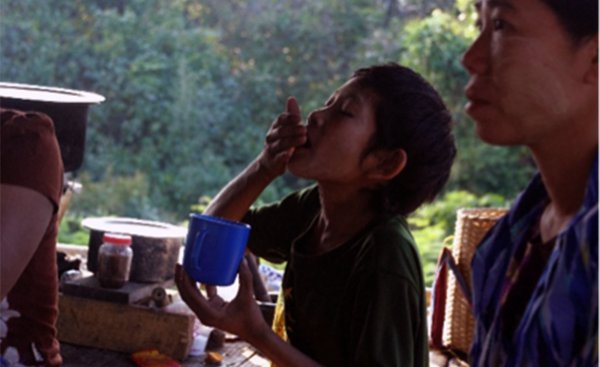Join us for a 3 February webinar - Radical cure of vivax malaria: can we do better?
Two new studies using WWARN-hosted clinical trial data show that the dosing of the 8-aminoquinoline drugs primaquine and tafenoquine can be substantially improved. These analyses include the majority of all studied vivax malaria patients who received 8-aminoquinoline drugs over the last 20 years. Laboratory work confirms these findings and provides important new information on the mechanism of action of these essential medicines.

We will be hosting a webinar on the radical cure of P. vivax malaria and what we can do better on 3 February 2023 at 12pm GMT. Sign up here to join the one-hour research webinar with presentations and an expert discussion.
- Dr Rob Commons, Menzies School of Health Research, on 8AQ efficacy in clinical trials
- Dr Alison Roth, Walter Reed Army Institute of Research, on laboratory studies assessing hypnozoitocidal activity
- Dr James Watson, Oxford University Clinical Research Unit, on the reassessment of tafenoquine pharmacometrics
- Discussion chaired by Dr Chau Nguyen Hoang, Oxford University Clinical Research Unit, and Professor Sir Nicholas White, Mahidol Oxford Research Unit
To stay up to date with our research, sign up to our IDDO newsletter or for more information about our work in malaria, sign up to the WWARN newsletter.
About the research
The study in eLife, published 6 December 2022, suggests that the current 300 mg adult dose of tafenoquine reduces recurrent P. vivax malaria infection by 70%, whereas increasing it to 450 mg would reduce recurrence by 85%. This means that for every 11 people treated with the higher dose, an additional person would be cured.
Tafenoquine is the first newly approved anti-relapse drug for 70 years, and its main advantage is that it can be taken as a single dose, unlike primaquine (the current treatment) which needs to be taken daily for 7–14 days.
“The same single dose of tafenoquine is recommended for all adults and this has important practical advantages. However, because of variation in body weight, that dose results in substantial variation in drug exposure,” explains lead author James Watson, a researcher at the Oxford University Clinical Research Unit (OUCRU), Hospital for Tropical Diseases, Ho Chi Minh City, Vietnam. “The tafenoquine studies suggested that this single 300 mg dose was inferior to primaquine doses which are lower than those recommended by the WHO in Southeast Asia. Overall, it seems that the currently recommended adult dose of tafenoquine is not as good as optimal primaquine treatment in preventing P. vivax malaria relapses in all endemic regions.”
To understand more about tafenoquine’s mechanism of action and optimal dosing, the team conducted a meta-analysis in which they pooled data from individual malaria patients who took part in the three clinical trials that led to the drug’s approval, and healthy volunteers involved in an earlier pharmacokinetics study. They then used statistical models to characterise the relationship between the weight-adjusted dose of tafenoquine or primaquine treatment and the likelihood of a recurrent malaria infection.
They found that each additional mg/kg of tafenoquine substantially reduced the chance of having a recurrent P. vivax malaria infection within four months. For example, increasing the dose from 3mg/kg to 4mg/kg reduces the proportion of patients with a recurrent infection from ~30% to 20%. This association between tafenoquine dose and the proportion relapsing was seen in patients from Asia, Africa and the Americas.
They then used patients’ weight data from the three efficacy trials to calculate the likely average efficacy of tafenoquine with either a 300 mg or 450 mg dose. A fixed tafenoquine dose of 300 mg would result in around 15% of the patients having a recurrence, whereas a dose of 450mg would reduce this proportion to 6%. Given that approximately half the patients given no anti-relapse treatment had a recurrence, this suggests that the lower 300 mg dose prevents 70% of recurrences whereas the 450 mg dose prevents 85% of recurrences.
To study the mechanism of action of tafenoquine, the team combined pharmacokinetics data from the healthy volunteers in the initial study with patients from the efficacy trials – nearly 4,500 drug measurements from 718 individuals. They also measured levels of methaemoglobin, a measure of oxidative activity in the body. These two analyses revealed the drug’s metabolism, reflected by its rate of elimination from the body, rather than exposure to the parent compound, determined its activity in preventing P. vivax malaria recurrences, and it suggests that the conversion of tafenoquine into oxidative metabolites was responsible for its antimalarial activity, just as for primaquine.
“Our analysis provides strong evidence that the currently recommended adult dose of tafenoquine is insufficient for radical cure in all adults,” concludes senior author Prof Sir Nicholas White, of the Mahidol-Oxford Tropical Medicine Research Unit (MORU) in Bangkok and the Centre for Tropical Medicine and Global Health, University of Oxford. “In endemic areas, relapse of P. vivax malaria causes substantial morbidity and contributes to mortality, particularly in young children. Tafenoquine can prevent malaria relapses in one treatment dose and is therefore, potentially, a major advance in antimalarial therapeutics. Getting the dose right is critical. The efficacy, tolerability and safety of increased doses should now be evaluated in prospective studies.”
Reference
The clinical pharmacology of tafenoquine in the radical cure of Plasmodium vivax malaria: an individual patient data meta-analysis. Watson JA, Commons RJ, Tarning J, Simpson JA, Llanos Cuentas A, Lacerda

